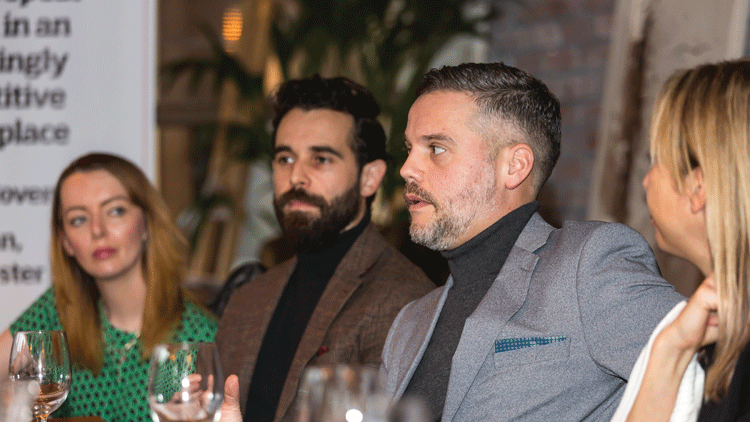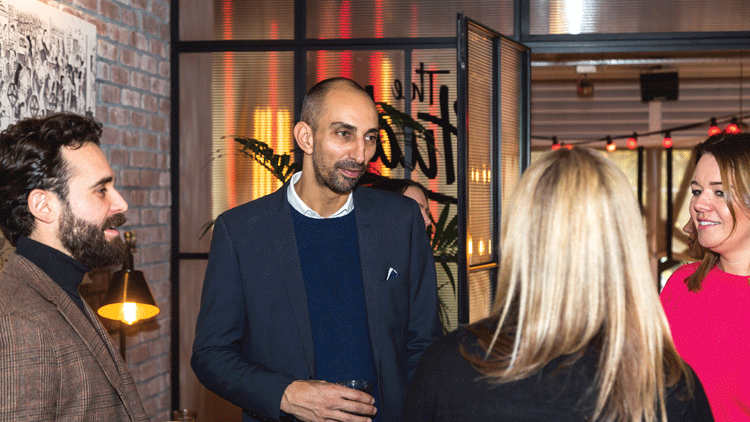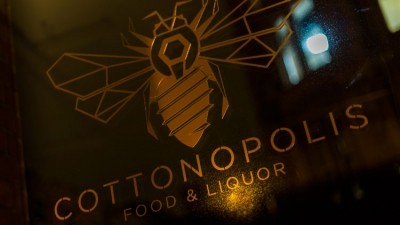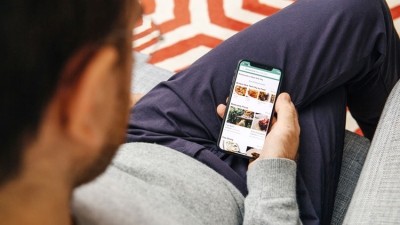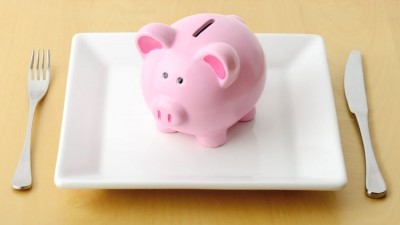How can restaurants drive loyalty in an era of mass competition?
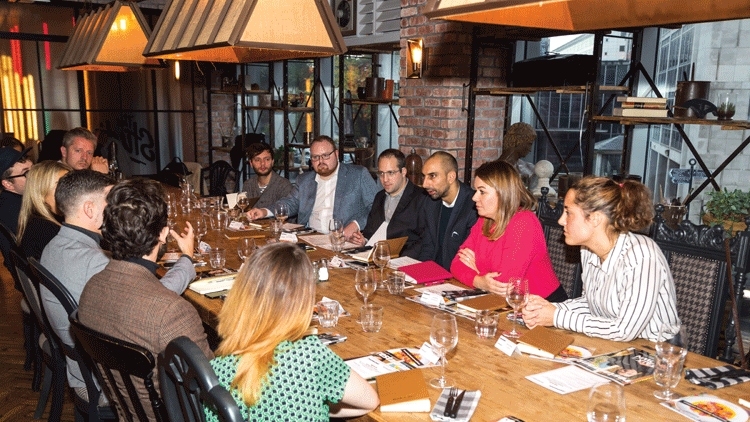
How do you drive repeat custom without driving your customers mad? That was one of the key points discussed by a group of seasoned restaurant operators at Manchester’s Artisan restaurant last month. Those round the table discussed how diner habits were changing and how restaurant strategies – specifically CRM, booking policies and social media – needed to evolve. Also on the agenda was FOMO (Fear Of Missing Out); TripAdvisor; and the thorny issue of no-shows.
Are customers becoming more or less loyal?
James Douglas (co-founder, Red's True Barbecue): Less loyal. I don’t go to the places that I like nearly as much as I used to. There are a huge number of new openings these days and therefore much more choice.
James Hacon (brand strategy director, Thai Leisure Group): The whole premise of loyalty in restaurants is an obscure concept. You need to break it down. What’s the process people are following when they come and dine? The most important thing is almost always location. The where comes first, the loyalty comes later down the line.
JD: Markets are different. Leeds is more experimental. We’ve just opened in Newcastle and we’re finding it difficult to get people to try something different.
Paul Hayes (senior sales manager, Bookatable): I eat in the same few restaurants in my local area. But I also have a list of the restaurants that I want to visit in nearby cities.
JH: What does loyalty look like? A diner could really rate what you do but that could only result in two visits a year.
Ashley Lawlor (assistant manager, Hispi): Our brand has very loyal customers, some of whom have followed Sticky Walnut from the day it first opened. The crowdfunding helps too, people are literally invested in what we do.
Simon Brooke (business development and marketing, Wood): We’ve just opened a restaurant with a chef at the helm who’s a big name. So we get the benefits of being a new restaurant with the added bonus of Simon Wood (2015 Masterchef winner). As such we’ve been busy despite not being in an obvious location.
AL: We don’t have as much data as we should on loyalty. We have the names and the amount of times they have visited but we don’t analyse it at the moment.
JD: This all contributed into pushing us into that special occasion category, which is not somewhere we really want to be. We’re now dialling that back a bit.
SB: Fear Of Missing Out (FOMO) is a big driver of restaurant visits. That’s a big change. Restaurants need to make people feel like they’re missing out by not coming, and that applies to regulars as well as new customers.
JH: We try to be more lifestyle rather than celebration. Most group restaurants are trying to do the same thing – there are only so many anniversaries and birthdays.
Nadia Leguel (UK business director, Bookatable): It’s three times harder to bring in a new customer than it is a repeat customer. The value of a new diner is huge if you can turn them into a regular customer.
Marko Husak (co-owner, Bundobust): Our concept is fun but has an everyday feel. To be honest, it’s a happy accident. Our menus are such that you can pop in and have one dish on your own, or have a big feast with friends. You could be at one of our sites for 15 minutes or two hours.
Monica Dalmau (business development manager, Fazenda): The key to understanding loyalty for us is to know why they are coming. Each person has a different reason. It’s often because we have a particular item, or perhaps it’s someone on the team. Once you understand that, it’s easier to get them to come back in.
Clement Gouy (reservations manager, Cottonopolis): Loyalty is a bit different for us as the bar is a huge part of our business. There are less opportunities for data capture. The key thing about our offer is that it’s flexible.
NL: In the past, loyalty was created by service. People went to restaurants and were recognised by staff and the owner. Now, it’s more about brands.
JH: The brand is what drives someone to try a restaurant. It’s then the people in that particular site who will drive loyalty.
NL: According to Google, 64% of people look for restaurant by location. Five years ago it was cuisine. People are more interested in what is new. If you look at our data, we’re seeing lots of new customers but fewer repeat customers. This suggests people are looking for new places to eat.
How social media has changed loyalty
Louise Kemp (head of business development, Living Ventures): Whatever we do now has a social media element. It used to be something we left to individual sites to do but now we control it centrally. Each brand has a dedicated brand marketing manager.
JH: Having a true personality behind an account really works. But for larger brands, that can be tricky. At Thai Leisure Group, our founders aren’t that active.
NL: We do Instagram takeovers with our Bookatable customers. We offer our feed to chefs; people like to see what’s happening in the kitchen.
JH: We take bookings through social media, which means we have to have one full-time person on social. We need the function but I’m not sure how much business it drives.
SB: Social media was hugely important to the launch of Wood. Simon’s reach as a chef is huge and he has quite a few followers. His personal account will always dwarf the restaurant account.
PH: Restaurants need to very careful because if the content they put out is not suitable they will be unfollowed.
SB: Yes. Restaurants often churn out the same stuff all the time which does not go down so well on social. Social should give decent information, it’s not about being a town crier. You need to engage with people, not shout at them.
JD: We have totally changed our approach to Instagram. We don’t pay for expensive photographers to take pictures of our food for Instagram. People don’t engage with it, they feel like they’re being sold to. Our Instagram account is now 99% user-generated content.
AL: We aim for a personal feel on social media. We get a lot more retweets and likes when we post pictures of the staff doing things.
Dealing with no-shows
LK: No-shows are a huge area of frustration for us. At Manchester House we’re fully booked most of the time, so when people don’t turn up it’s very difficult. We had 20 people not show up for afternoon tea last weekend. We can’t claw it back as there’s no passing trade. It’s less of a problem at Australasia because it’s in a high footfall area.
AL: We’ve changed the way we take bookings because we were having such big issues with no-shows at Hispi. We do a maximum of 120 covers on a Saturday night and sometimes we were getting as many as 30 no-shows. We’ve started taking credit card details to put a bit of fear in people, but we never charge. It’s had a very positive effect.
LK: We take large deposits on Friday and Saturday nights because we’ve been hit so many times by no-shows.
NL: We’ve looked at a lot of solutions but the problem is the stats clearly show that having to pay a deposit or give credit card details reduces the number of conversions. We’re trying to educate our users that a cancellation is far better than a no-show.
LK: We trialled a text messaging service at Australasia that reminds people about their booking on the day and allows them to cancel easily. We saw no-shows reduce dramatically.
NL: A lot of people try to cancel by phone but restaurants don’t answer so they just give up.
JH: We have 35,000 to 38,000 guests in a week across our restaurants and get around 6,000 calls a week – only 26% were answered. That’s a severe issue. So I set up a central reservations team. That largely solved our issues with no-shows.
MD: On Friday and Saturdays we have two people who just take phone calls. It’s amazing how much better we are at maximising our capacity on those days. A big challenge at Fazenda is timing. We have three fixed seating times in the evenings. When people turn up late or cancel, it can throw everything out.
LK: If I’m told a time to leave I don’t like that, it’s negative. That’s me as a consumer. We give people a time on emails but it’s up to the team on the evening to ensure everything runs smoothly.
SB: We offer pre-theatre but occasionally people take that menu and don’t have a show to get to and end up lingering. This is very unprofitable for us, we can’t have people sat here for two and a half hours on a two-course menu.
LK: We only do tasting menus on weekend evenings and people get three hours. We only turn a maximum of half our tables at weekends. At Manchester House, people are coming for the whole experience. Nobody wants to come in at 6pm or 9pm, so we seat nearly everyone at around 7.30pm.
JD: People used to be prepared to wait a long time at Red’s. I used to be accused of sweating the door too hard. In the early days, I’d have a table for 10 people with five different couples on it. These days people will only wait an hour or so, and we remind them by text message and they tend to come back. If they have to wait two hours, they are a lot less likely to come back.
JH: Thaikun sits in a similar space to Red’s. We take a deposit for any booking over eight people.
MH: Bookings are a bit of a grey area for us. We’re very casual and want to turn tables. But people do want to book. We used to have a minimum table of six people, but at Manchester it’s two or more. We only offer half the covers for booking. We’re bar service too, which it a bit awkward.
JD: People hate not being able to book. We used to have people shouting at us at the door saying that we were making it impossible to plan a night out. We bowed to the pressure. People were giving us one star on TripAdvisor because they could not get in because it was busy.
Dealing with the reviews sites
JH: When you have a small independent group you can get away with arguing with people on TripAdvisor. But when you’re trying to fill a much bigger collection of venues you risk pissing people off. We always agree with the customer. All of our sites are now above four stars, which is where most larger groups aim to be.
LK: We used to pretty much ignore it but we’ve actually just put something in place to reply to everything. We have set templates. Our aim is to take everything offline and sort it out.
JH: Even when you’re right, you never win. If they don’t come back you’ve lost. We may take stuff offline when we’re dealing with it but we always follow up with a public tweet to let people know it’s been sorted.
DK: I used to work for a company that was so obsessed with its TripAdvisor rating that we had to pretty much bribe guests who had left negative reviews. It was one of our most important metrics. We had to give them enough free stuff until they took it down.
JD: You can learn a lot from TripAdvisor. It’s a good research tool in some respects. If we’ve had loads of stuff on the menu, I know that in a week or so we’ll start to see reviews that mention that.
This article was based on a roundtable discussion held at Artisan in Manchester in association with Bookatable by Michelin.
